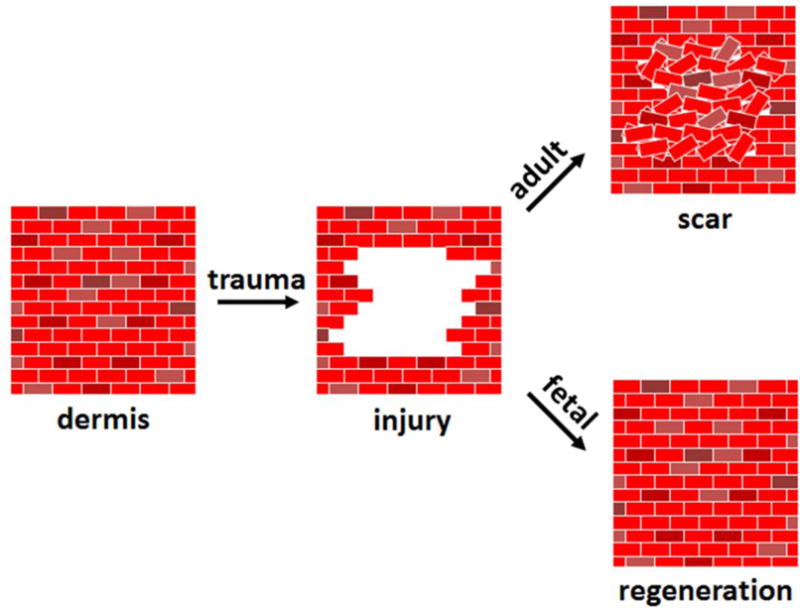Fig. 1.

After traumatic injury to tissues such as the skin, adult wounds heal with imperfect repair and scar formation resulting in a loss of natural structure and function. In contrast, fetal dermal wounds heal in a regenerative manner and are virtually indistinguishable from non-injured tissue. In either case, the quality of healing is dictated by fibroblasts that are responsible for invading the wound bed, depositing new collagenous tissue, and contracting and remodeling this tissue. Since fibroblast activity in the wound bed determines healing outcomes, regenerative or scarless wound healing is highly dependent on the intrinsic properties of fetal fibroblasts.
